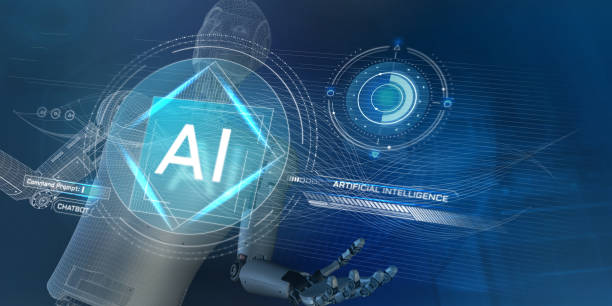What is an AI Robot? A Comprehensive Definition and Brief History

An #AI_robot (Artificial Intelligence Robot) is a robot that, using #artificial_intelligence algorithms, is capable of performing tasks that usually require human intelligence.
These tasks can include learning, reasoning, problem-solving, perception (such as image and sound recognition), and even interaction with humans.
In other words, an AI robot attempts to mimic human behavior and cognitive abilities.
The history of robotics dates back centuries, but the serious emergence of intelligent robots began in the mid-20th century with significant advancements in computer science and artificial intelligence.
From simple industrial robots that performed repetitive tasks, today we see complex robots being used in various fields including medicine, agriculture, customer services, and even space exploration.
This evolution is due to advancements in machine learning algorithms, natural language processing, and computer vision, which allow robots to interact better with their environment and make smarter decisions.
The future of AI robots looks very bright.
These robots are expected to play a more significant role in our daily lives and help solve many problems.
However, the development and use of these robots also come with challenges that need to be addressed.
For more information on artificial intelligence, you can refer to Wikipedia.
Are you bothered by losing customers due to the outdated appearance or slow speed of your online store? RasaWeb’s expert team solves these problems by designing a professional e-commerce website!
✅ Increase customer trust and brand credibility
✅ Stunning speed and excellent user experience
Get a free consultation with RasaWeb right now ⚡
Key Components of an AI Robot: A Detailed Look at Hardware and Software

An AI robot consists of two main parts: #hardware and #software.
Hardware includes the physical components of the robot such as the body, motors, sensors, and processors.
These components allow the robot to interact with the physical world, collect information, and control its movements.
For example, sensors can measure information such as temperature, pressure, light, and distance, while motors are responsible for the robot’s movement.
The software of an AI robot is its thinking brain.
This software includes AI algorithms, machine learning models, and control programs that enable the robot to process collected information, make decisions, and perform its tasks.
Machine learning algorithms allow the robot to learn from data and improve its performance.
Natural language processing enables the robot to communicate with humans in natural language, and computer vision allows the robot to recognize and understand images.
The connection between hardware and software is very important.
The software must be able to receive information from sensors, process it, and send the necessary commands to the motors.
The hardware must also be able to execute these commands correctly.
In this way, the AI robot can perform its tasks effectively and efficiently.
Developers must consider these two aspects simultaneously to create an intelligent and efficient robot.
To explore common robots, you can refer to Wired’s website.
Types of AI Robots: Exploring Categories Based on Application and Capabilities

AI robots can be divided into different categories based on their applications and capabilities.
One of the most common classifications is based on application, which includes industrial robots, medical robots, service robots, and military robots.
Industrial robots are typically used for repetitive and dangerous tasks in factories.
Medical robots are used in surgery, rehabilitation, and patient care.
Service robots are employed for tasks such as cleaning, delivery, and customer services.
Military robots are also used in various fields including reconnaissance, bomb disposal, and combat operations.
There is also another classification based on the robot’s capabilities.
Some robots are only capable of performing predefined tasks, while others can learn and adapt to their environment.
More advanced robots can make decisions and even communicate with humans in natural language.
Choosing the right type of AI robot depends on the specific needs and goals of the user.
For example, a factory might need a simple industrial robot for repetitive tasks, while a hospital might need an advanced medical robot for complex surgeries.
In general, AI robots are evolving and progressing, and are expected to play a more significant role in our lives in the future.
The Robotics Association is a very good resource for exploring classifications.
| Robot Type | Application |
|---|---|
| Industrial | Production automation, packaging |
| Medical | Surgery, rehabilitation, care |
| Service | Cleaning, delivery, customer services |
| Military | Reconnaissance, bomb disposal |
Applications of AI Robots in Various Industries: From Medicine to Agriculture
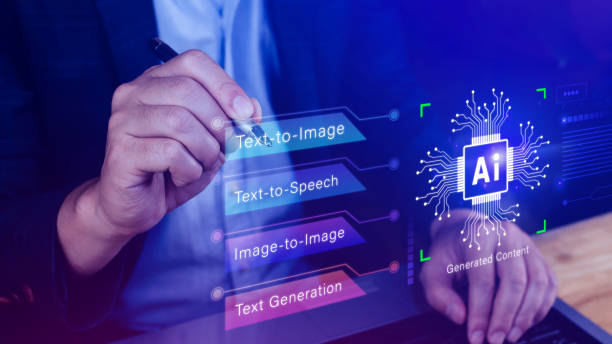
AI robots have wide-ranging applications in various industries.
In the #medical_industry, these robots can play an important role in precise surgeries, patient rehabilitation, and elderly care.
For example, surgical robots can perform operations with greater precision than humans, reducing the risk of complications.
Rehabilitation robots can help patients regain their motor skills after injury or illness.
Also, care robots can assist the elderly with daily tasks and save them from loneliness and isolation.
In the #agricultural_industry, AI robots can assist farmers in planting, tending, and harvesting crops.
These robots can analyze soil and plant conditions using sensors and AI algorithms, and optimize irrigation and fertilization accordingly.
Additionally, harvesting robots can pick agricultural products with greater speed and accuracy than humans, reducing waste.
In the #manufacturing_industry, AI robots can be employed in production lines to perform repetitive and dangerous tasks.
These robots can assemble parts and package products with greater precision and speed than humans.
Furthermore, inspection robots can check product quality and prevent defective products from entering the market.
Finally, these robots can be used in service industries, transportation, and other areas.
Artificial intelligence is also progressing in Iran.
Are you tired of losing business opportunities due to not having a professional corporate website?
RasaWeb, with professional corporate website design, helps you:
✅ Build a powerful and trustworthy image for your brand
✅ Convert website visitors into loyal customers
⚡ Get a free consultation right now!
Advantages and Disadvantages of Using AI Robots: A Comprehensive Review
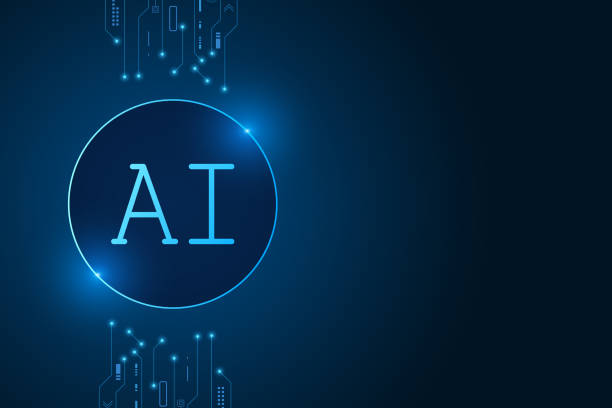
The use of #AI_robots has numerous advantages.
One of the most important advantages is increased productivity and reduced costs.
Robots can work 24/7 without interruption and perform tasks with greater accuracy and speed than humans.
This leads to increased production and reduced labor costs.
Another advantage is the reduction of risks and harm.
Robots can be employed in dangerous environments such as mines, chemical factories, and nuclear power plants, preventing harm to humans.
However, the use of AI robots also has disadvantages.
One of the most significant disadvantages is the loss of job opportunities.
With the entry of robots into the job market, many traditional jobs will disappear, leading to widespread unemployment.
This can lead to increased social and economic inequality.
Another drawback is ethical and security issues.
The use of robots in fields such as military and security can lead to violations of individual privacy and serious risks.
Also, AI algorithms may have errors and biases, which can lead to unfair and discriminatory decisions.
Therefore, the use of AI robots requires a thorough examination of their advantages and disadvantages and the adoption of appropriate measures to mitigate risks and maximize benefits.
To reduce the negative effects of unemployment, governments should provide training and retraining programs for unemployed workers.
Furthermore, appropriate laws and regulations must be established for the use of robots in various fields to prevent violations of individual privacy and serious risks.
Challenges in Developing and Implementing AI Robots: Obstacles Ahead

The development and implementation of #AI_robots face numerous challenges.
One of the most significant challenges is the scarcity of training data.
AI algorithms require a large amount of data to learn and improve their performance.
Collecting and labeling this data can be very costly and time-consuming.
Another challenge is the complexity of algorithms.
Developing AI algorithms that can effectively perform complex tasks requires high levels of knowledge and expertise.
In addition, ethical and legal issues are among the significant challenges in the development and implementation of AI robots.
It must be ensured that robots are designed and programmed in a way that respects individual rights and privacy and makes fair and impartial decisions.
Furthermore, the accountability of robots in case of errors or harm must be clearly defined.
To overcome these challenges, we need more investment in AI research and development, training of specialized personnel, and the creation of appropriate legal and ethical frameworks.
Also, cooperation between universities, companies, and governments can help accelerate the development and implementation of AI robots.
For further study on AI and its challenges, you can refer to MIT News.
The Future of AI Robots: Predictions and Emerging Trends
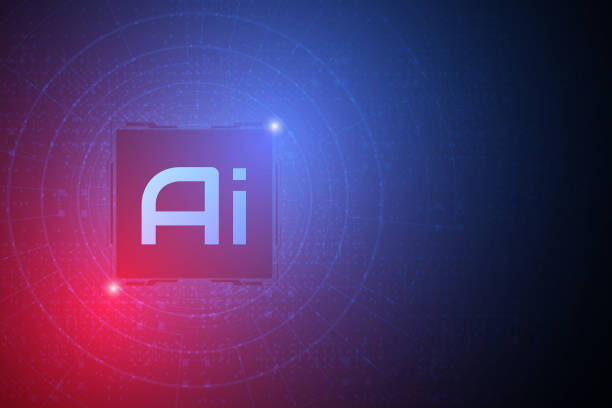
The future of #AI_robots looks very bright.
With daily advancements in AI and robotics, robots are expected to play a more significant role in our daily lives and help solve many problems.
One of the emerging trends is the development of autonomous robots that can perform their tasks without human intervention.
These robots can be employed in various fields including transportation, agriculture, and customer services.
Another trend is the development of collaborative robots that can work alongside humans and assist them in performing tasks.
These robots can be used in factories, hospitals, and offices, increasing productivity and work quality.
Furthermore, robots are expected to play a more significant role in areas such as education, healthcare, and entertainment.
For example, robots can be employed as private tutors, nurses, and companions for the elderly.
However, the development and use of AI robots require attention to ethical and social issues.
It must be ensured that robots are designed and programmed in a way that respects individual rights and privacy and makes fair and impartial decisions.
Also, the economic and social effects of robots entering the job market must be considered, and appropriate measures taken to mitigate the negative effects of unemployment.
| Trend | Description | Potential Impacts |
|---|---|---|
| Autonomous Robots | Robots perform tasks without human intervention. | Improved efficiency in transportation, agriculture, services. |
| Collaborative Robots | Robots work alongside humans and assist them. | Improved productivity and quality in factories, hospitals, offices. |
| Robots in Education | Robots are used as private tutors and instructors. | Providing personalized education and aiding better learning. |
Key Considerations When Choosing and Buying an AI Robot
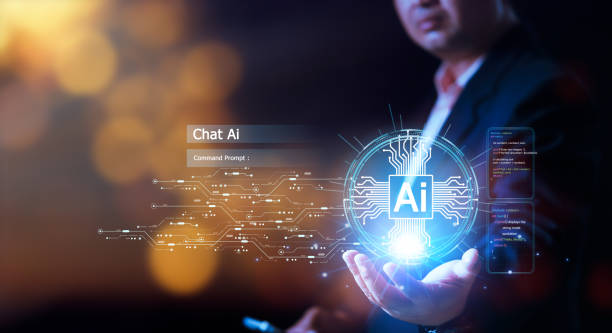
Choosing and buying an #AI_robot requires a careful review of the user’s needs and goals.
Before purchasing, it must be determined what purpose the robot will serve and what tasks it needs to perform.
Then, various features and capabilities of robots available in the market should be examined, and a robot that best matches the user’s needs and goals should be selected.
The important point is that an AI robot must have the ability to learn and adapt to its environment.
Smart robots not only perform predefined tasks but can also improve their performance and learn new tasks by analyzing data and experience.
In addition, the price and maintenance costs of the robot must also be considered.
Some robots have a high price, and their maintenance costs are also high.
It must be ensured that the robot purchase is cost-effective and provides a suitable return on investment.
Furthermore, attention should be paid to the robot’s after-sales services and technical support.
In case of a problem, it should be easy to contact the robot manufacturer or seller and use technical support services.
Finally, before purchasing an AI robot, sufficient research should be conducted, and the opinions and experiences of other users should be considered.
The necessary information can be gathered through the internet and social media, and experts and specialists in this field can be consulted.
For more information and comparisons, you can refer to PC Mag’s website.
Does your current corporate website not reflect your brand’s credibility and power as it should? RasaWeb solves this challenge for you with professional corporate website design.
✅ Increase visitor credibility and trust
✅ Targeted attraction of more customers
⚡ Click for a free consultation!
Impact of AI Robots on Jobs and the Labor Market: Short-term and Long-term Effects

The entry of #AI_robots into the labor market will have significant impacts on jobs and the labor market.
In the short term, some traditional jobs involving repetitive and routine tasks may disappear, leading to widespread unemployment.
However, in the long term, robots are expected to create new jobs and increase productivity and economic growth.
New jobs created in the design, production, maintenance, and repair of robots, and the development of AI algorithms, can replace lost jobs.
To mitigate the negative effects of unemployment, governments and organizations must provide training and retraining programs for unemployed workers.
These programs should help workers acquire new skills that are needed in the future job market.
Furthermore, policies should be adopted to protect workers from abuse and exploitation and to guarantee their rights.
For example, workers can be supported to participate in the shares of companies that use robots and benefit from the profits generated by increased productivity.
Overall, the impact of AI robots on the labor market is complex and multifaceted, requiring careful management and planning.
By adopting appropriate measures, the benefits of robots can be harnessed, and their negative effects reduced.
For example, the development of new technologies and new jobs that emerge around these technologies can be a good replacement for lost labor.
Ethical and Legal Issues of AI Robots: Accountability and Privacy

The development and use of #AI_robots raise important ethical and legal issues.
One of the most significant issues is the accountability of robots.
If an AI robot makes an error or causes harm, who will be responsible? Is it the manufacturer, the programmer, the user, or the robot itself? Determining robot accountability requires a thorough review of existing laws and regulations and the enactment of new ones.
Another issue is the protection of individual privacy.
AI robots can collect a large amount of information about individuals and use this information for various purposes.
It must be ensured that individuals’ personal information is properly protected and misuse is prevented.
Furthermore, individuals should be given full control over their personal information and be able to access, modify, and prevent its deletion.
In addition, other issues such as discrimination, transparency, and justice must also be considered.
AI algorithms may have errors and biases, which can lead to unfair and discriminatory decisions.
Efforts must be made to design algorithms that are fair and impartial and prevent discrimination.
To examine these issues, you can obtain information from the IEEE organization.
ChatGPT AI has also raised issues in this regard.
Frequently Asked Questions
| Row | Question | Answer |
|---|---|---|
| 1 | What is an AI robot? | An AI robot is a machine capable of understanding, reasoning, learning, and problem-solving, and can perform complex tasks with relative autonomy. |
| 2 | What are the most important applications of AI robots? | Primary applications include industrial manufacturing, customer services (chatbots), medicine and surgery, autonomous transportation, space exploration, and military affairs. |
| 3 | What is the main difference between an AI robot and a regular robot? | A regular robot only follows programmed instructions, whereas an AI robot can learn from data, make decisions, and adapt itself to new environments. |
| 4 | How do AI robots learn? | They identify patterns and improve their performance through machine learning algorithms (such as deep learning, reinforcement learning) and processing vast amounts of data. |
| 5 | Can AI robots have emotions? | Currently, AI robots do not possess real emotions in the human sense. They can mimic or detect emotions, but they do not understand or experience them. |
| 6 | What are the current limitations of AI robots? | Limitations include the need for large amounts of data, inability to understand abstract concepts, lack of true creativity, ethical issues, and challenges in generalization to new environments. |
| 7 | What is the role of AI in the development of humanoid robots? | AI helps humanoid robots walk, maintain balance, understand their surroundings, interact with humans, and perform complex tasks. |
| 8 | How is the future of AI robots predicted? | It is predicted that AI robots will become smarter, more autonomous, and capable of performing more complex tasks in daily life and industry, and their interaction with humans will increase. |
| 9 | Can AI robots replace all human jobs? | It is unlikely that all human jobs will be replaced. Robots will take over many repetitive and dangerous tasks, but jobs requiring creativity, empathy, and ethical judgment will remain. |
| 10 | What ethical and social challenges arise with the expansion of AI robots? | Challenges include issues related to privacy, data security, ethical decision-making by robots, impact on employment, and accountability in case of errors. |
And other advertising services of Rasa Web advertising agency
- Smart Sales Automation: A fast and efficient solution for increasing click-through rates with a focus on marketing automation.
- Smart Sales Automation: A fast and efficient solution for campaign management with a focus on marketing automation.
- Smart Data Analysis: A fast and efficient solution for increasing click-through rates with a focus on marketing automation.
- Smart Digital Advertising: An effective tool for campaign management with the help of key page optimization.
- Smart Digital Branding: A fast and efficient solution for increasing sales with a focus on intelligent data analysis.
And over hundreds of other services in the field of internet advertising, advertising consultation, and organizational solutions
Internet Advertising | Advertising Strategy | Advertorial
References
Comprehensive Guide to AI Robots on Zoomit
Amazing Applications of Smart Robots
Future of Technology: AI Robots
Advantages and Disadvantages of Using AI Robots
? Are you ready to transform your business in the digital world? RasaWeb Afarin Digital Marketing Agency, specializing in providing comprehensive digital solutions, from corporate website design to SEO optimization and social media management, is ready to assist you on your path to growth and achieving your goals. With us, have a powerful and influential online presence.
📍 Tehran, Mirdamad Street, next to Bank Markazi, Southern Kazeroon Alley, Ramin Alley, No. 6

